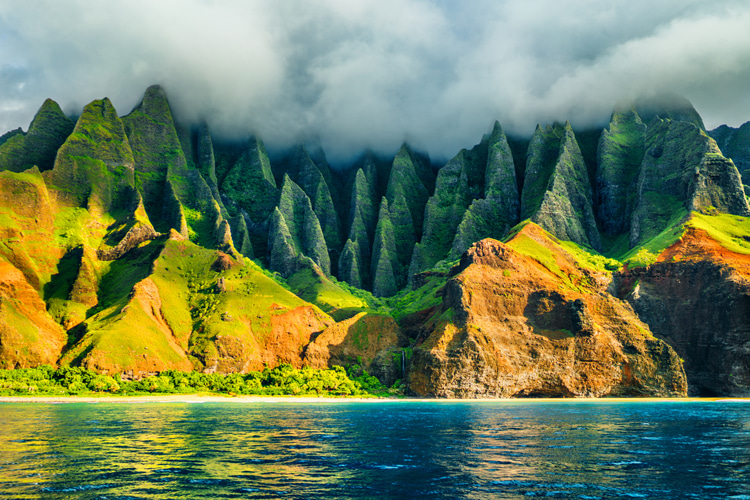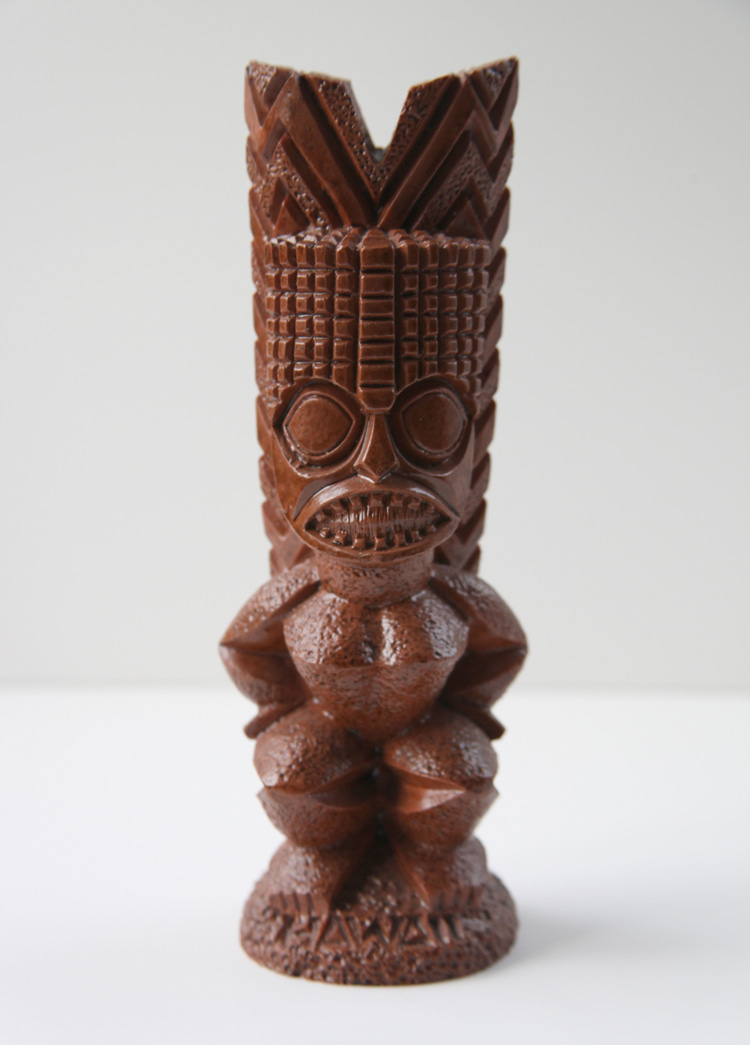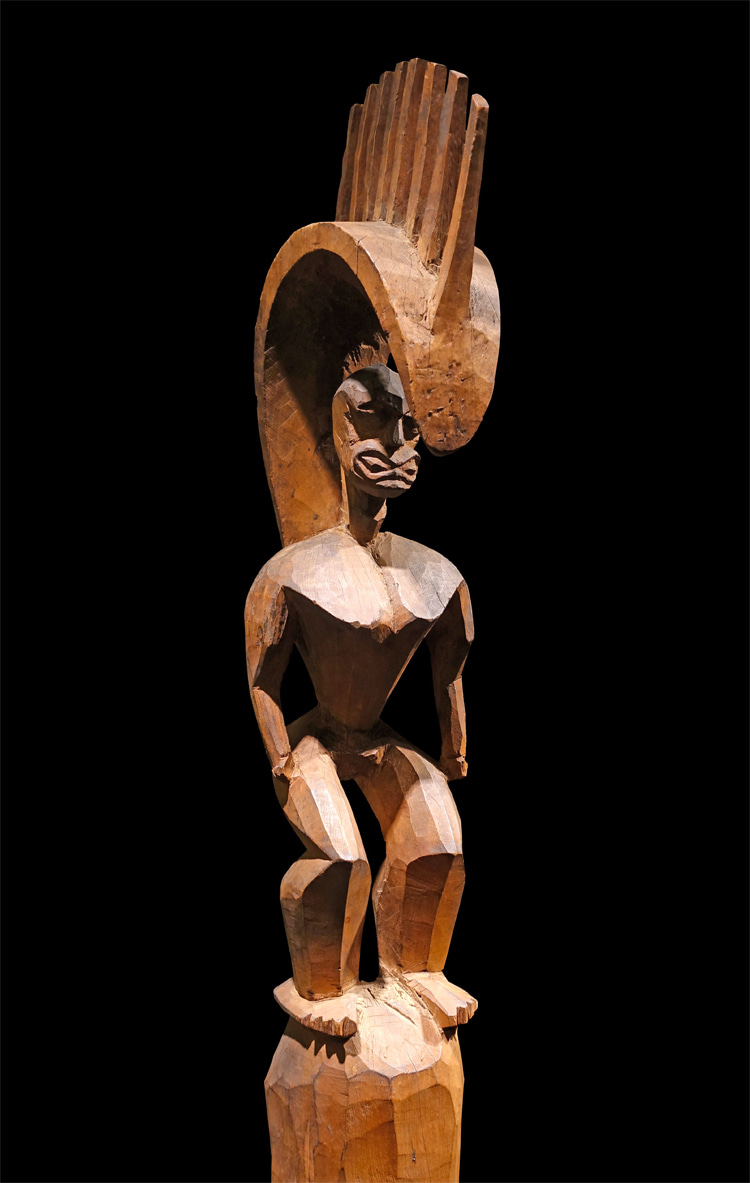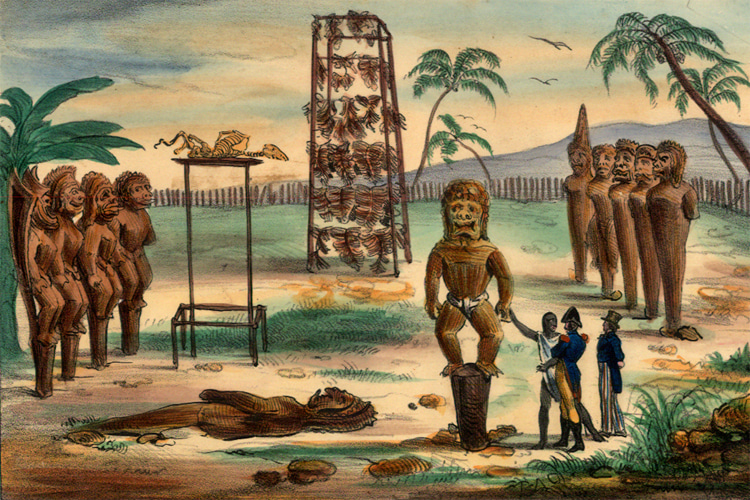The Hawaiian religion is polytheistic, which means it is open to and embraces several gods and goddesses, each one with several functions and responsibilities.
In fact, the Hawaiians worship around 40,000 traditional religious deities and spirits.
Hawaiian mythology focuses on narratives of life and Nature, and it is inspired by a broader portrait of the Polynesian religious tradition.
The conceptual and contextual background of Hawaiian religion developed throughout several centuries until the foreign settlers and missionaries suppressed it in the 19th century.
The ancient Hawaiian religion and mythology are still alive and followed by local residents.
In the past - but also today - common people and chiefs worshipped four main gods - Kāne, Kanaloa, Kū, and Lono.
Each of these gods manifests itself differently, and different communities worship different manifestations of these entities.

The Birth of Hawaiian Religion
The four major Hawaiian gods and religious beliefs were brought to the islands by Pa'ao, a Samoan from Tahiti who arrived in the archipelago between 1,100 and 1,200 AD.
Pa'ao was a conqueror and a priest.
He conquered Hawaii and started an age of war in the territory because he was not pleased with how the descendants of Hawai'i Loa ruled the islands.
Pa'ao introduced new gods to the Hawaiian people, the kapu system - a code of conduct of laws and regulations - and human sacrifice.
Hawaiian religion is a rich mix of Native Hawaiian practices and indigenous religious beliefs.
At its core is the belief that spirits can be found in animals, objects, and natural elements like the sky, the waves, and volcanoes.
In 1978, the US Congress passed the American Indian Religious Freedom Act (AIRFA), a federal law that protects and preserves the traditional religious practices of Native Hawaiians, American Indians, Eskimos, and Aleuts.
Let's take a closer look at the four major Hawaiian gods.
Kāne: The God of Creation and the Sky

Kāne is the god of Creation and the sky. He is the god of all gods and goddesses.
He created Kanaloa to act as his opposite - while Kāne represents life and light, Kanaloa represents dark and darkness.
He created Lono to take care of the land and its fertility.
If the Hawaiian people needed help giving birth, they would give offerings to Kāne and ask for his help.
If they were creating something - a canoe or a building - they would give offerings to Kāne for his blessing on the new creation.
Kanaloa: The God of the Ocean

Kanaloa is the god of the sea and the underworld.
He created Kū, who he married to his daughter Hina, the goddess of love, peace, and renewal of life.
Interestingly, Kū and Hina are opposites but also represent husband and wife.
The Hawaiians prayed to him for anything that had to do with the ocean.
If they were about to sail a canoe, they would pray to Kanaloa and offer him gifts at his temple.
If they were going on a fishing journey, they would pray for successful fishing from Kanaloa and make offerings at his house of worship.
Kū: The God of War

Kū is the god of war. He was known to be a very fierce god.
Kū is the only god that requires human sacrifices. Humans were killed on his altar as a gift to him.
Kū rules over eight months of the year, the time of war when the hereditary line of rulers - ali'i - would attack each other to try to steal each other's land.
Lono: The God of Peace, Rain, and Fertility

Lono is the god of agriculture, fertility, and peace. He brings Sun, wind, and rain to make the land fertile again.
Lono rules over four months of the year, which means four months of the year that Kū doesn't have.
During Lono's time, war is forbidden. It's a time of feasting, dancing, and games that are played during the peaceful period.
These traditional games are supposed to strengthen people's skills and muscles for battle.
In peacetime, the priests of Lono - or the kahuna - would walk around the island with their white kapa and announce that it was peacetime.
Lono's time of peace is also known as the Makahiki season.
